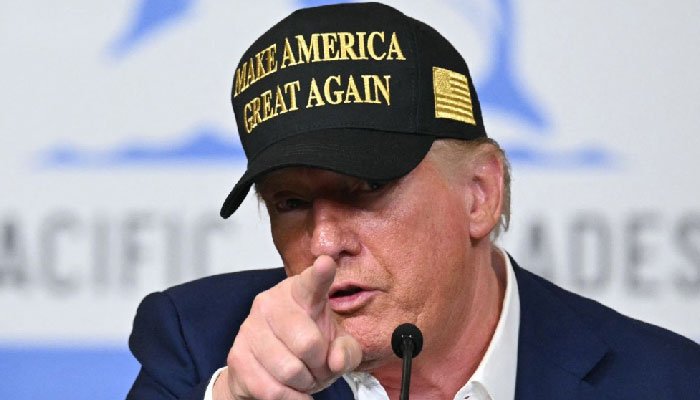US-China Trade War Escalates Over AI, Semiconductors & Rare Earths. The trade war between the United States and China has entered a new phase, intensifying with the US’s latest regulatory measures aimed at curbing China’s access to cutting-edge technologies, particularly those related to artificial intelligence (AI) and semiconductor manufacturing.
This month, the US Bureau of Industry and Security announced a fresh set of strategic export controls targeting 140 Chinese companies, fearing that China could leverage AI for military applications, particularly in the automated identification and targeting of human subjects. The new restrictions are focused on high-bandwidth AI memory chips, software used in chip design and development, and equipment essential for semiconductor manufacturing.
This move is part of a broader US strategy to slow China’s progress in developing advanced AI weapons systems, similar to those utilized recently in Ukraine and Israel. The Biden administration’s attempt to limit China’s access to these critical technologies has been met with an aggressive response from Beijing, which has announced a ban on the export of rare earth metals and other essential high-tech materials, such as gallium, germanium, and antimony. These materials are crucial for the production of US military hardware, including advanced fighter jets like the F-35. Gallium, in particular, is vital for the high-performance memory chips that the US is trying to block China from accessing, and its unavailability could disrupt US supply chains to the tune of $3 billion.
Interestingly, China’s customs data shows that no gallium or germanium was exported to the US this year, even before the formal announcement of the export ban. This indicates that the restrictions might not be as significant as they initially appear, as China has already curtailed shipments of these materials. China’s dominance in the production of rare earth metals, which account for more than 90% of global supply, has been a strategic asset that the country has used in its trade wars. Since China imposed quotas on rare earth exports to the US in 2009, Washington has sought to reduce its dependence on China by establishing a “Minerals Security Partnership” with countries like Australia, Japan, and members of the European Union.
Despite having domestic rare earth reserves, the US had previously been reluctant to mine these materials due to environmental concerns. However, the geostrategic importance of these minerals has prompted the US to resume mining operations in Alaska, Montana, Nevada, and Minnesota. Furthermore, the US Department of Defense has initiated programs to recycle rare earths, such as extracting gallium from scrap materials and recovering germanium from obsolete military equipment, including night vision modules and tank glass panes.
The US has also sought to exert greater control over semiconductor manufacturing, using the Foreign Direct Product Rule, which allows the US government to restrict the sale of products made with American technology. This has led to pressure on countries like Singapore and Taiwan to withhold semiconductor manufacturing equipment from Chinese companies. In August 2024, the Biden administration expanded this rule, preventing the export of semiconductor manufacturing equipment to Chinese fabs, even if they are located outside China. This policy aims to prevent China from acquiring the technology needed to produce state-of-the-art chips and other critical technologies. In addition, the US has signed agreements with Japan and the Netherlands to ensure that export controls on semiconductor technology are coordinated among their allies.
In a similar vein, China has expanded its export restrictions, making its ban on rare earth metals applicable to all countries, corporations, and individuals. Previously, exporters had to apply for licenses to send materials like gallium and germanium to the US, but now this ban affects all international shipments. At the same time, Beijing has ramped up its scrutiny of US companies operating in China. For instance, Chinese regulators have launched antitrust investigations into Nvidia, accusing the chipmaker of violating Chinese competition laws and improperly acquiring Israeli firms. In response to US export restrictions, Nvidia has been releasing modified versions of its products for the Chinese market to ensure compliance with US sanctions.
The weaponization of trade and the absence of intervention from international bodies like the World Trade Organization (WTO) have had significant consequences on global supply chains, particularly in sectors reliant on high-tech materials and components. One notable example is the electric vehicle (EV) industry. China has been aggressively expanding its EV manufacturing capacity, but the US has imposed a 100% tariff on Chinese-made EVs, making it difficult for American consumers to access more affordable electric cars. Additionally, China’s tightened controls on graphite exports have disrupted global EV manufacturing schedules and driven up costs for companies reliant on these materials.
Despite the ongoing trade war, there is one notable exception: Tesla’s unique position in the Chinese market. Tesla was the first foreign company to establish a wholly-owned factory in Shanghai, without having to enter into a joint venture with a Chinese state-owned enterprise. The company has also received significant incentives from the Chinese government, including cheap financing from state-owned banks, preferential tax rates, and favorable factory lease terms. Elon Musk’s ability to navigate this complex landscape has given him a unique opportunity to ease tensions between the US and China. Tesla’s success in China has demonstrated that it is possible to invest in China without transferring critical technology, which has been a major concern for the US government.
While the ongoing trade conflict continues to shape the technological race between the two powers, the role of emerging technologies such as AI and semiconductors remains central. The trade restrictions imposed by both nations are reshaping global supply chains and impacting industries worldwide. Despite the current tensions, there is still potential for collaboration in certain areas, as demonstrated by Tesla’s experience in China. However, reversing the current trajectory of US-China trade relations and rolling back trade restrictions to pre-2008 levels will be a challenging and long-term endeavor. The ongoing geopolitical and economic shifts suggest that the trade war between the US and China is far from over, and its outcome will have significant implications for the future of global trade and technological development.








